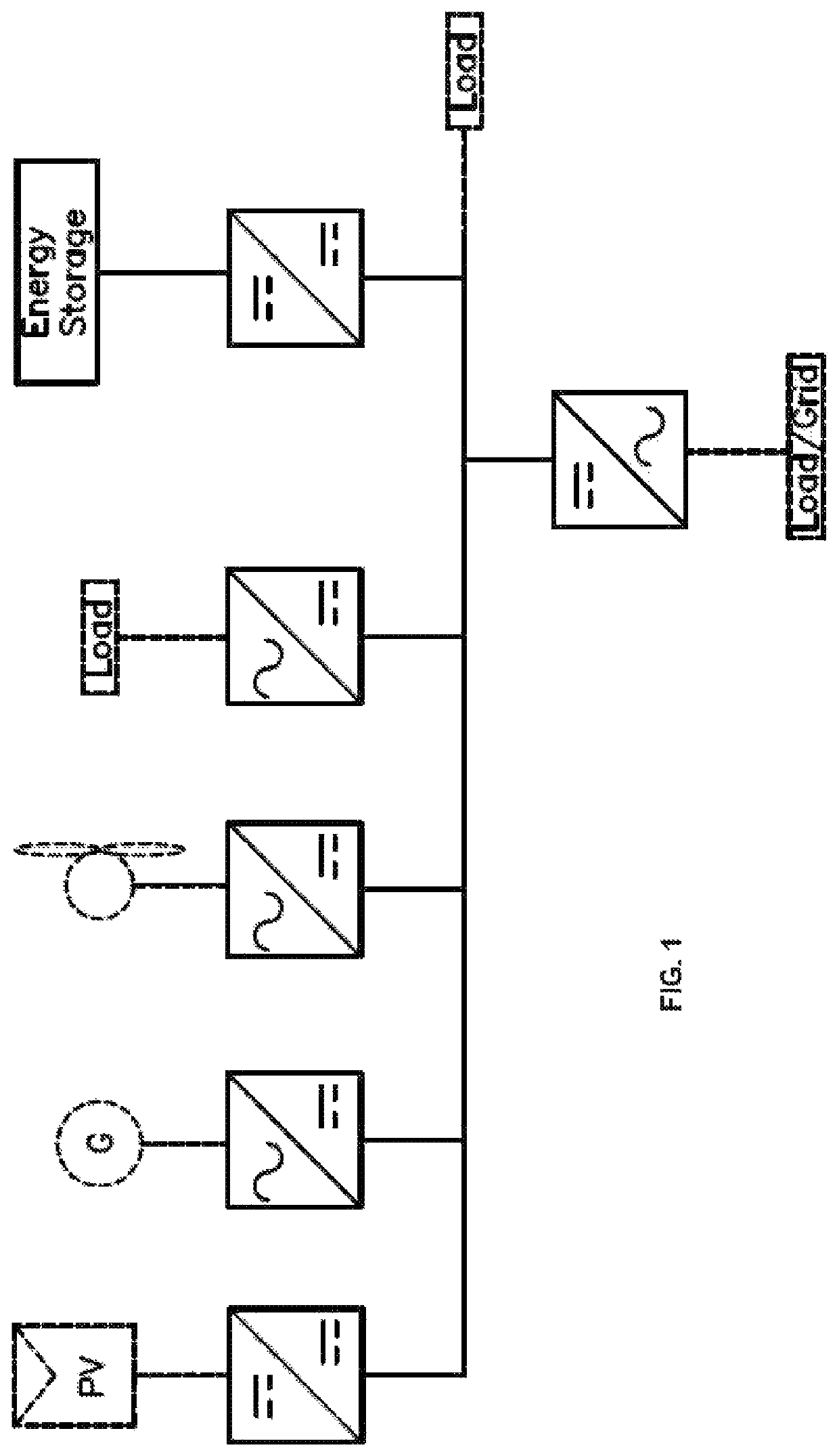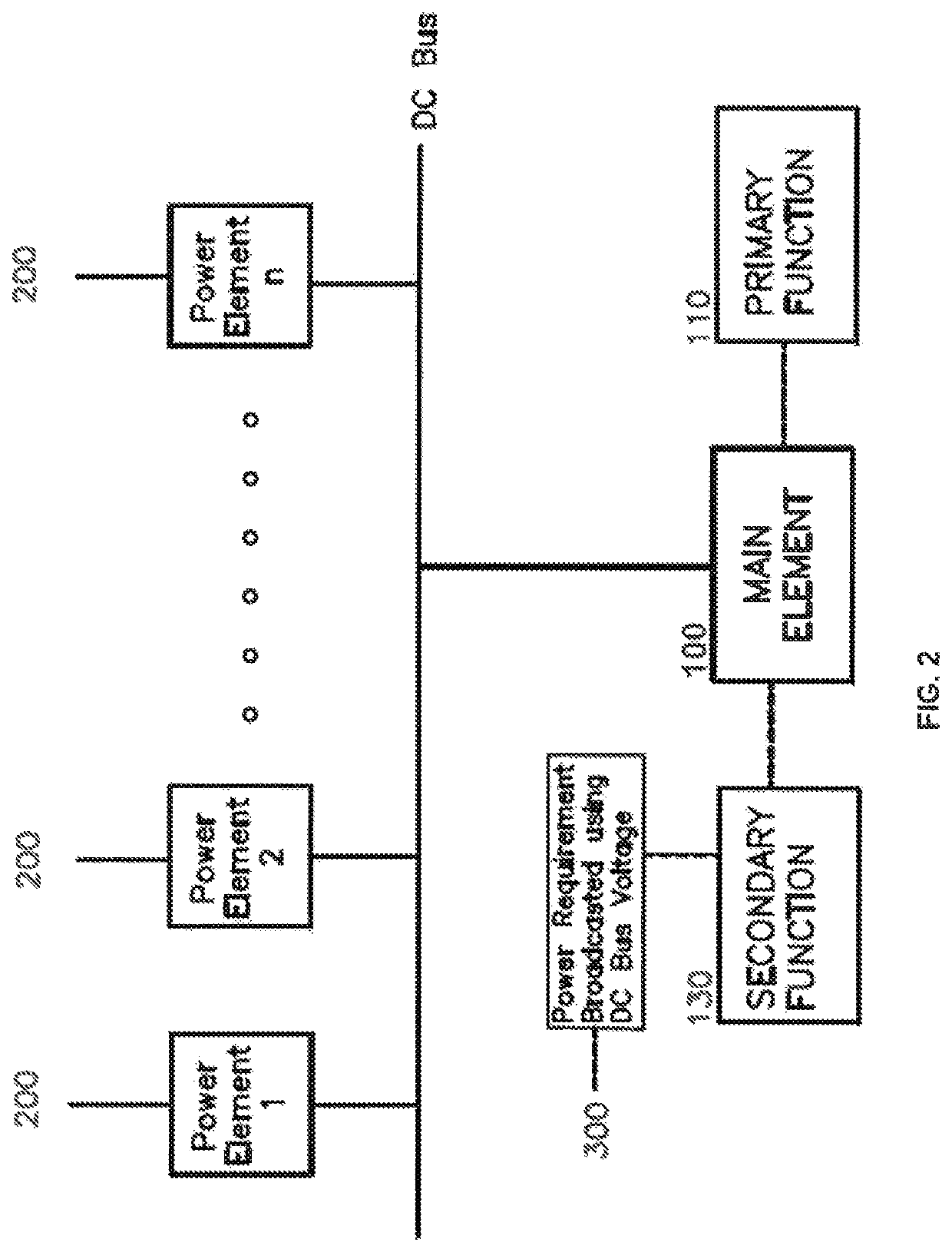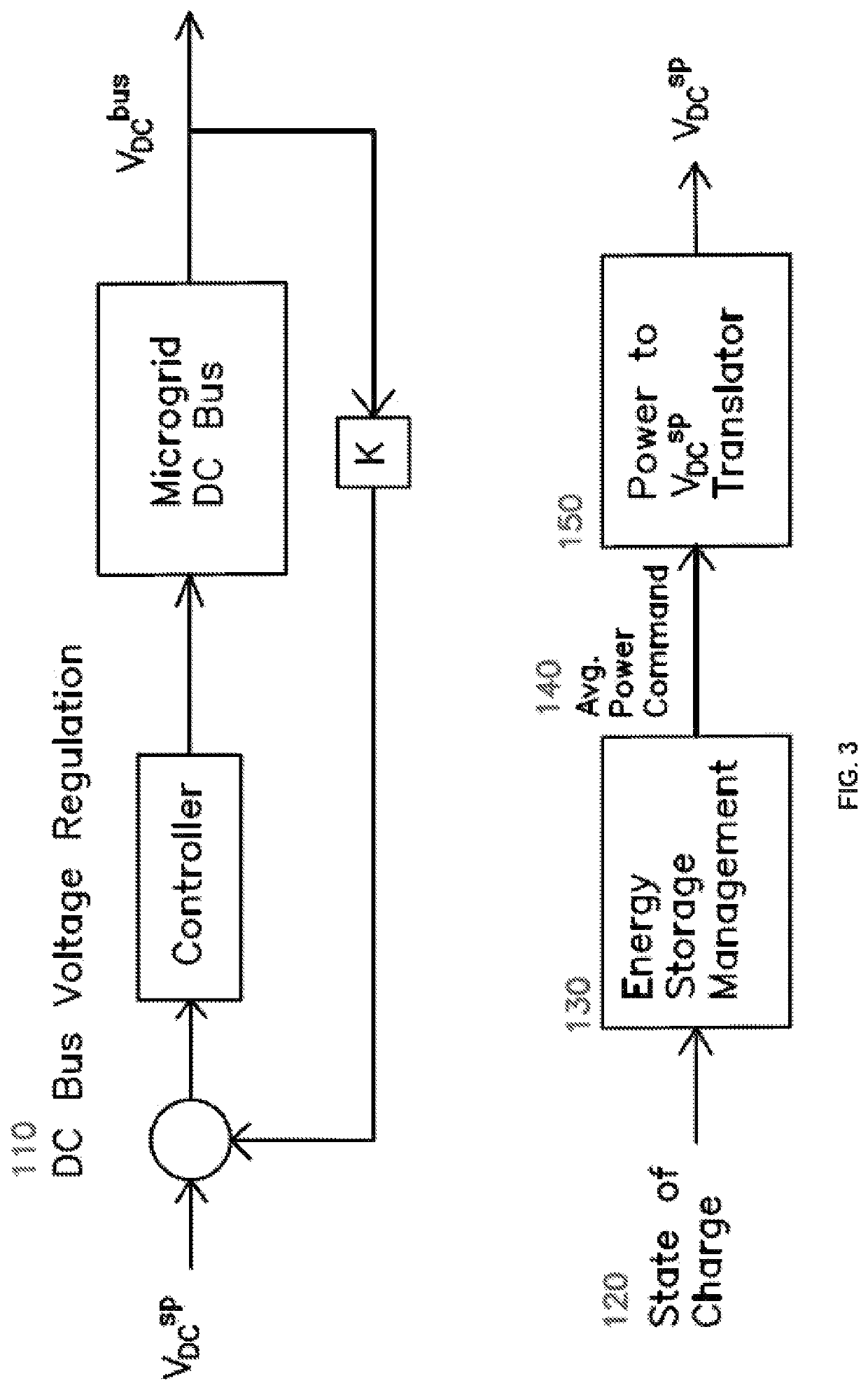Power management concept in DC distributed systems
a distributed system and power management technology, applied in the direction of transmission systems, dc source parallel operation, load balancing in the dc network, etc., can solve the problems of high cost, low flexibility, and difficulty in regulating the dc voltag
- Summary
- Abstract
- Description
- Claims
- Application Information
AI Technical Summary
Benefits of technology
Problems solved by technology
Method used
Image
Examples
Embodiment Construction
[0025]The invention presents a method to interconnect and control a DC power distribution system composed by multiple independent power elements including power generators and power consumers. The method enables achieving multiple levels of control using the DC bus voltage as the only mean of communication amongst the power elements. The primary level of control is the DC bus voltage regulation while the second level of control involves an independent variable that has slower dynamic response than the DC bus voltage. In other words, the changes in the independent variable controlled by the second level of control are considerably slower than the changes in DC bus voltage.
[0026]FIG. 1 illustrates a microgrid based on a DC distribution system. The DC distribution system uses a common DC bus to join multiple power elements and the continuous operation of the system depends on maintaining the DC bus voltage regulated within the normal operating range. Nevertheless, the different power e...
PUM
 Login to View More
Login to View More Abstract
Description
Claims
Application Information
 Login to View More
Login to View More - R&D
- Intellectual Property
- Life Sciences
- Materials
- Tech Scout
- Unparalleled Data Quality
- Higher Quality Content
- 60% Fewer Hallucinations
Browse by: Latest US Patents, China's latest patents, Technical Efficacy Thesaurus, Application Domain, Technology Topic, Popular Technical Reports.
© 2025 PatSnap. All rights reserved.Legal|Privacy policy|Modern Slavery Act Transparency Statement|Sitemap|About US| Contact US: help@patsnap.com



